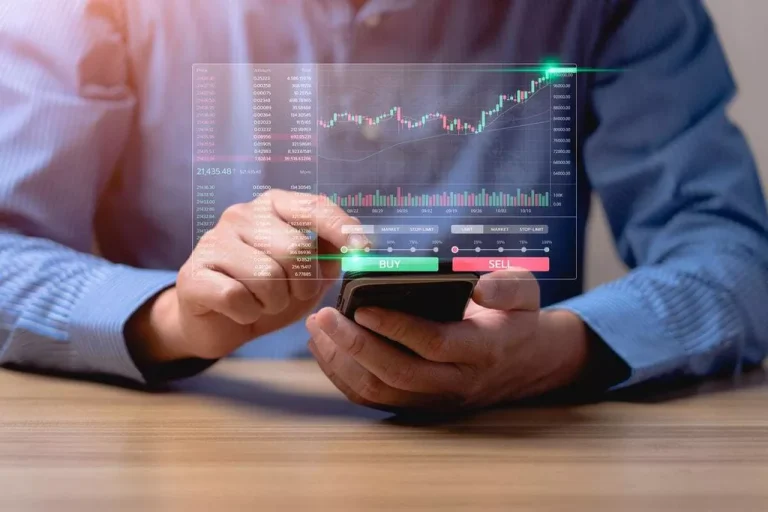How to Use Artificial Intelligence in Your Investing in 2023
ImpacTech use subsets of AI like sentiment analysis, natural language processing (NLP) and machine learning (ML) in tools to process every interaction and extract business-driving predictive analytics. The platforms upon which these tools perform best is Impact CRM and Impact Telecom. The idea is to develop AI algorithms that allow a prediction about where a stock or other security will go for the purpose of making a profit.

Firms may wish to review their AI-based investment tools to determine whether related activity may be deemed as offering discretionary investment advice and therefore implicate the Investment Advisors Act of 1940. Broker-dealers are also https://www.xcritical.in/ exploring and using AI applications within their portfolio management and trading functions. And because AI trading uses historical financial data to inform decisions, there is less risk for human error and more room for accuracy.
Advisory Services
At this time, few firms have currently incorporated AI into their operations. Census Bureau of 300,000 businesses, published in November 2022 (just ahead of the ChatGPT excitement), revealed that only 4% used AI in their business. Surveys conducted by Gartner, McKinsey, Accenture and others have found higher adoption rates in specific industries, such as the retail industry adopting AI-suggested product recommendations for shoppers. AI has the potential for disruption, displacing some jobs and creating new ones as it transforms the global labor force.
Select System Test, and you will have access to 58 systems you can backtest. I selected the Equis – MACD Expert System in the example below and ran it on the entire Nasdaq 100. To use the Pine script backtesting, you must learn basic scripting, which can take some time. TrendSpider has also implemented a strategy tester that allows you to type what you want to test freely, and it will do the coding for you. It is a smooth and simple implementation that had me up and running in minutes.
In a nutshell, our formula for Devexa is advanced machine learning + specific-domain expertise. With artificial intelligence and machine learning being adopted in nearly every industry, trading and investing is no exception. 2009 is committed to honest, unbiased investing education to help you become an independent investor. We develop high-quality free & premium stock market training courses & have published multiple books. We also thoroughly test and recommend the best investment research software.
Vector Database Startups to Watch
Every customer facing department including sales, support and marketing generates data. When this is collected centrally and processed it enables a business to deliver a personalized customer journey. People expect to receive the same level of customer service they get from other popular online services. This is why many successful brokers are investing in AI tools and platforms to stay ahead of the competition.
As humans and machines combine intelligence, there are potential benefits for both workers and businesses in old and new industries. It might even improve government budgets through taxes on higher incomes of both workers and firms. AI holds the potential to transform employment, drive faster productivity growth, and drive gains for investors.
- The final area of AI is a subset of machine learning known as deep learning; here, the machine teaches itself new behaviors based on its current data and past experience.
- Numerai uses machine learning to predict stock market trends and manage a new kind of hedge fund.
- Of course, each detected pattern has a backtested track record of success, and this pattern’s success is factored into the prediction using their Trend Prediction Engine.
- Not only has the cost of capital gone up with the climb in interest rates, but there are also plenty of costs tied to the regulatory uncertainty and data privacy issues that may temper the rising enthusiasm for AI investment.
- Users of Netflix will be familiar with its personalized recommendations function.
- In addition to the specific risks related to individual stocks, AI stocks broadly face tougher regulation and legislation as agencies and lawmakers work on putting safety boundaries on the development and uses of AI.
It’s hard to pick winners or get the timing right for any new technology, so diversification may offer broad exposure to AI as a theme with less individual company risk. In general, look for AI stocks that provide critical components (hardware and software) and those that use AI to improve products or gain a strategic edge. It’s likely we will all be AI investors eventually, given what may become widespread adoption by businesses around the world. For those considering investing in AI stocks, consider Schwab.com’s AI theme that features 25 AI-related stocks from around the world.
What’s the difference between AI, Machine Learning & Deep Learning?
Our research shows the leaders in AI trading software are Trade Ideas and TrendSpider. Trade Ideas has automated AI trading Bots for stocks and a proven track record. TrendSpider has excellent trendline and pattern recognition, the best backtesting engine, and Bot integration. There is a lot of technology available to remove the need for human involvement. Automated investing can help streamline and improve the investing and trading processes. This can yield more efficiencies and higher investment returns in the long run.
If you do not, you can ask MetaStock or one of many MetaStock Partners to assist you in building your system. After 60 seconds, the backtest was completed and presented a list of every buy or sell trade and the drawdown on the portfolio chart. You can click through to any trade to see the trade background, trade size, duration, and profit or loss. As you launch MetaStock, you will be presented with the power console, enabling you to quickly select what you want to do.
SignalStack: Convert AI Signals Into Trading Bots
Mainstream trading platforms like Robinhood and others could also start to incorporate some of these AI trading tools soon. Although Magnifi only recently launched, we’ll likely see more such AI investing platforms as investors are eager to take advantage of the new technology. One such app is called Magnifi, which uses ChatGPT and other AI tools to provide real-time investment advice. Algorithmic trading does work, but no trading strategy works 100% of the time since market conditions and traders adjust to new information quickly.
The ML-based estimates we have include the probability of an up or down move the next day, multiday rankings, and predictive equity rankings. Algoriz has no listed business owners; there is no YouTube channel, social presence, or Trustpilot reviews. The only published VectorVest performance is a 20-year-old reference to fantastic returns of 2,000%+, which is unrepresentative of reality. VectorVest continually evaluates every stock on the exchanges they cover to provide their proprietary ratings. Of course, the inbuilt systems will not make you super-rich; you want to backtest and develop your own winning system to get an edge in the market. With some scripting or programming skills, you will achieve this with MetaStock.
Engaging in AI trading can also improve the average investor’s success rate, and here’s how. Investment Research for Schwab Investing Themes™ is provided by Charles Schwab Investment Management, Inc. (« CSIM »). Both CSIM and Schwab are separate entities and subsidiaries of The Charles Schwab Corporation. Schwab Investing Themes is not intended to be investment advice or a recommendation of any stock or investment strategy.
AI for Brokers and Traders: State-of-the-Art 2022
A safe trading bot would have a proven performance history and provide transparency into the decision-making logic and risk controls. StockHero bills itself as “advanced AI Trading in Brokerage AI trading software” but fails to deliver on its promises. It claims a win rate of 90%, but there is absolutely no evidence or track record performance audit.
Additionally, jobs based mainly on processing skills such as programming and writing skills will be heavily impacted while those emphasizing critical thinking will be less so. This is because ChatGPT-like technology has the potential to take over processing tasks held by humans, such as question-answering, drafting reports, and grammar corrections to cite few of them. Unlike other chatbots, ChatGPT uses a reinforcement learning model based on human input, which allows it to produce more relevant answers. Despite its capabilities, results are not completely reliable and answers may contain factual inaccuracies. Care should be taken when using the results of a language model, especially in high-stakes contexts that match the needs of a specific use case. Traders can also gain access to insights from the Trade Ideas AI assistant Holly through a dashboard-like interface inside the same desktop application.
I will clarify the realities of AI and Bots in trading and test 10 of the best AI Trading Bot software. Robo-advisors are often the first step for beginning investors, and these platforms are heavily reliant on AI. While some artificial intelligence represents cutting-edge technology and the ability to understand and process language, plenty of it is much more intuitive.


